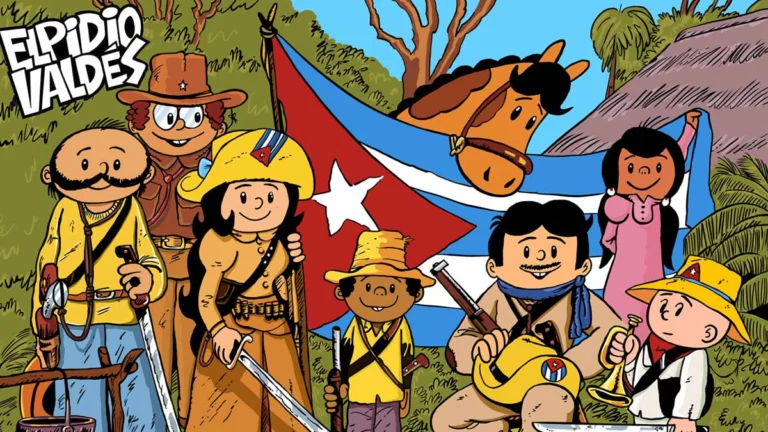Elpidio Valdes: Cuba’s Fight For Independence as a Cartoon

Photo: Revista Cine Cubano.
August 5, 2025 Hour: 7:16 am
When the Cuban Institute of Cinematographic Art and Industry (ICAIC) released the locally acclaimed film Elpidio Valdés vs. The Military Train in 1974, it was almost five years since the iconic character Elpidio Valdés first appeared as a cartoon in a children’s magazine. Now, this beloved character is celebrating his 55th anniversary.
Elpidio is the main hero of one of Cuba’s most iconic and enduring animated series. As a mambí, he embodies the struggles of an island that had to fight against Spanish colonialism, specifically in the 19th century. Yet, his creator, Juan Padron, approaches this serious topic through the lens of satire, prioritizing entertainment over historical lecture. Still, thanks to Elpidio’s widespread recognition and acclaim across the Caribbean nation, the character plays a valuable role in introducing children to Cuba’s national history.
His debut comic strip was announced on the cover of the then-weekly children’s magazine Pionero, issue 305, on August 4, 1970, and appeared in the following edition.
Week after week, filling entire pages, the character steadily gained followers. Then came Elpidio Valdes vs. The Ninjas — announced in issue 333 — which gradually became a lasting part of the imagination of young audiences: a different kind of hero, without a cape or traditional superpowers, but armed with a machete—a symbol of the Cuban wars for independence against the Kingdom of Spain—and plenty of cunning.
The creator himself, also the author of several other cult classics like Vampires in Havana, had previously made a very different comic for the samurai Kashibashi, which happened to feature a 19th-century Cuban mambí. “I named him Elpidio Valdés to echo Cecilia Valdes, and I drew him on the first try without any sketch,” Padrón once explained.
Although the Japanese samurai was the original protagonist, he noticed that the speech bubbles related to Elpidio were much more engaging. “So, I scrapped the 12 pages I had sketched and rewrote the entire story with Elpidio as the main character,” he added.
And just like that, fifty-five years ago, thanks to Padron’s choice, one of Cuba’s most cherished popular culture characters was born.
Author: vmmh

